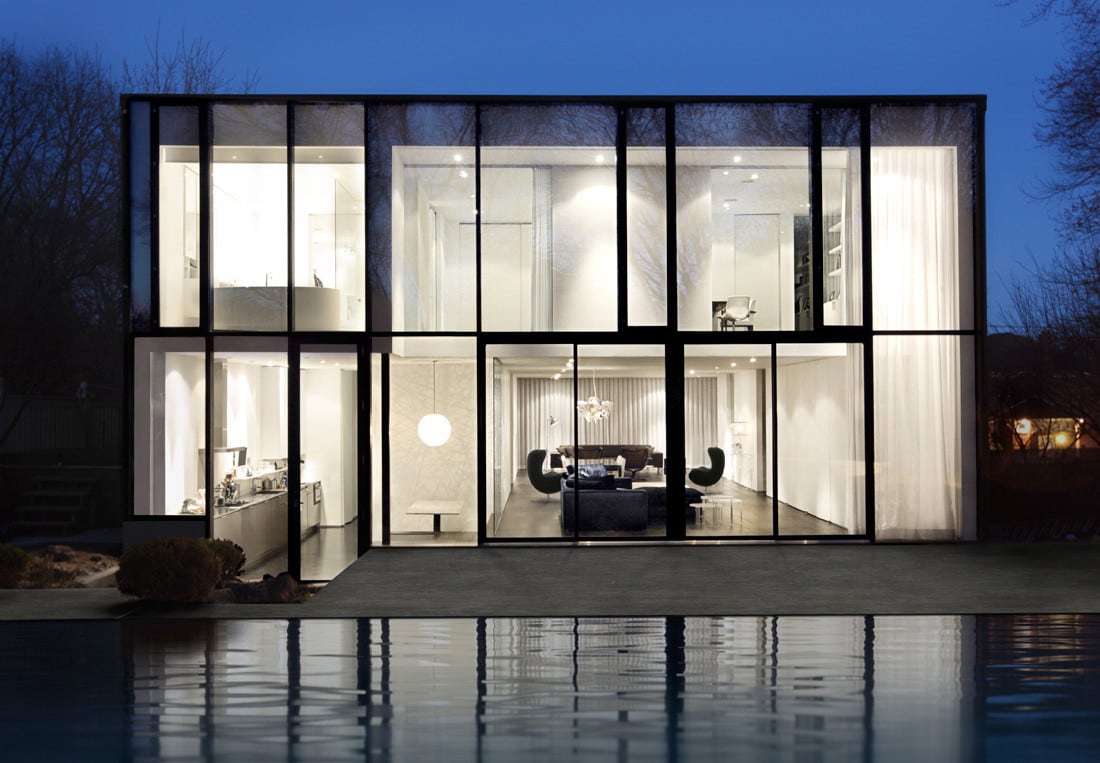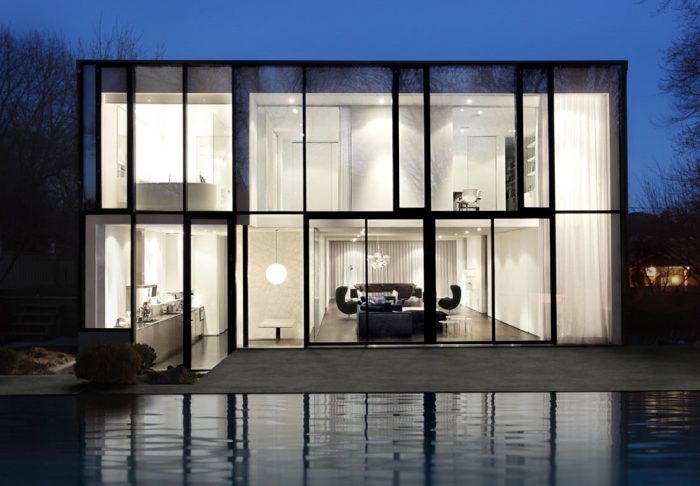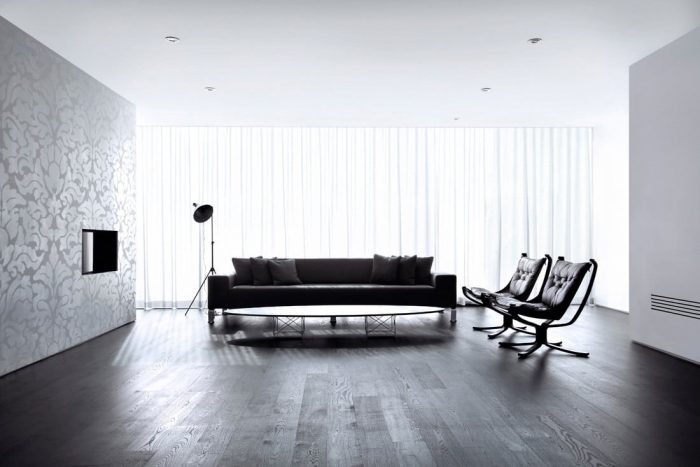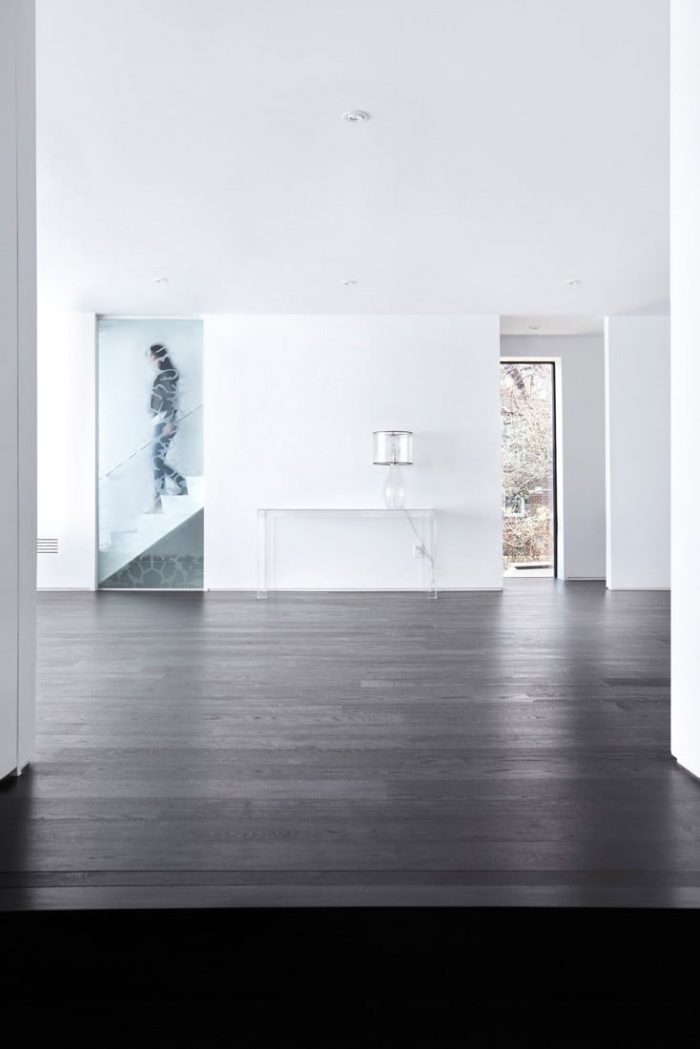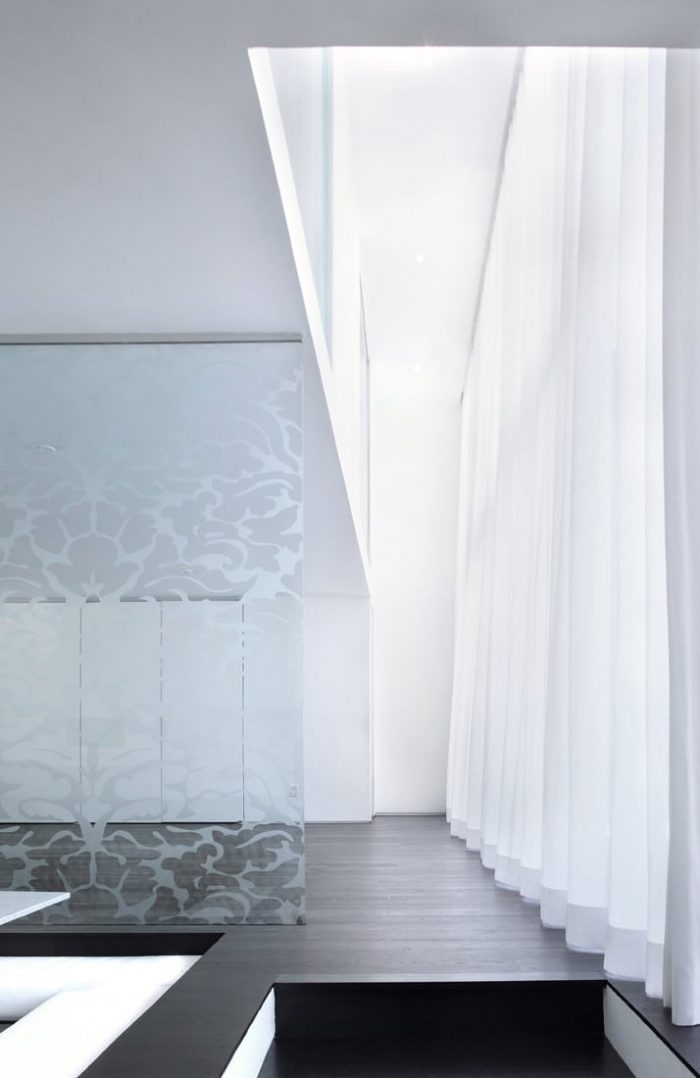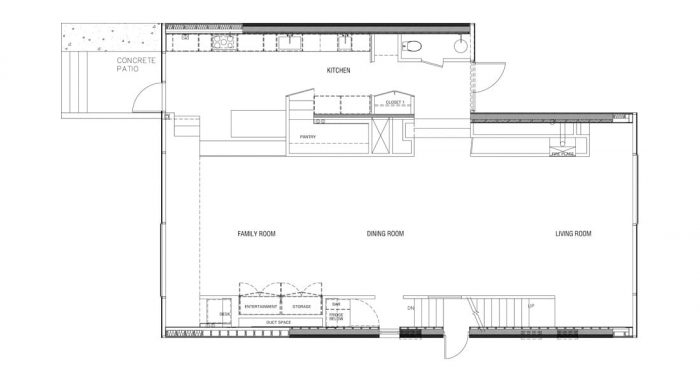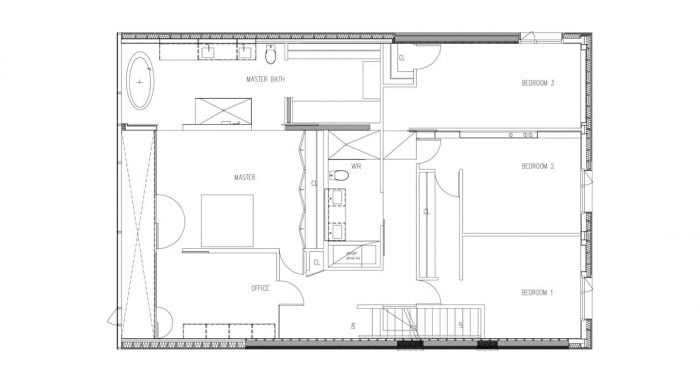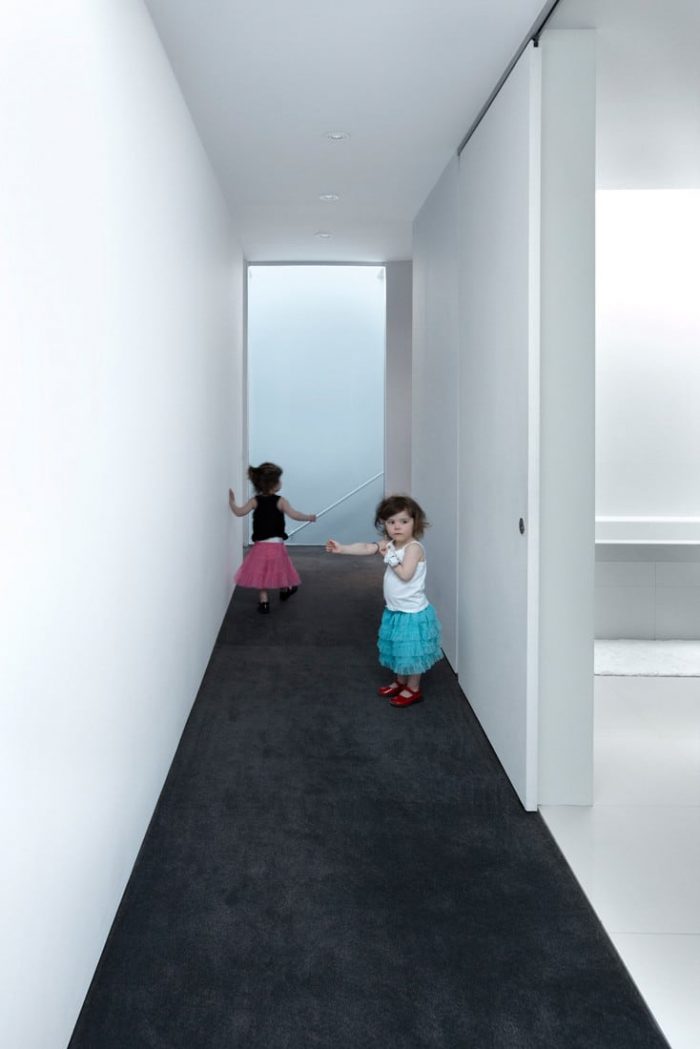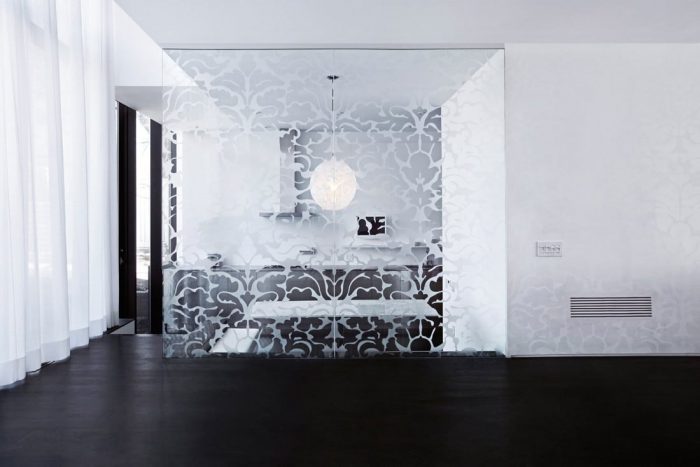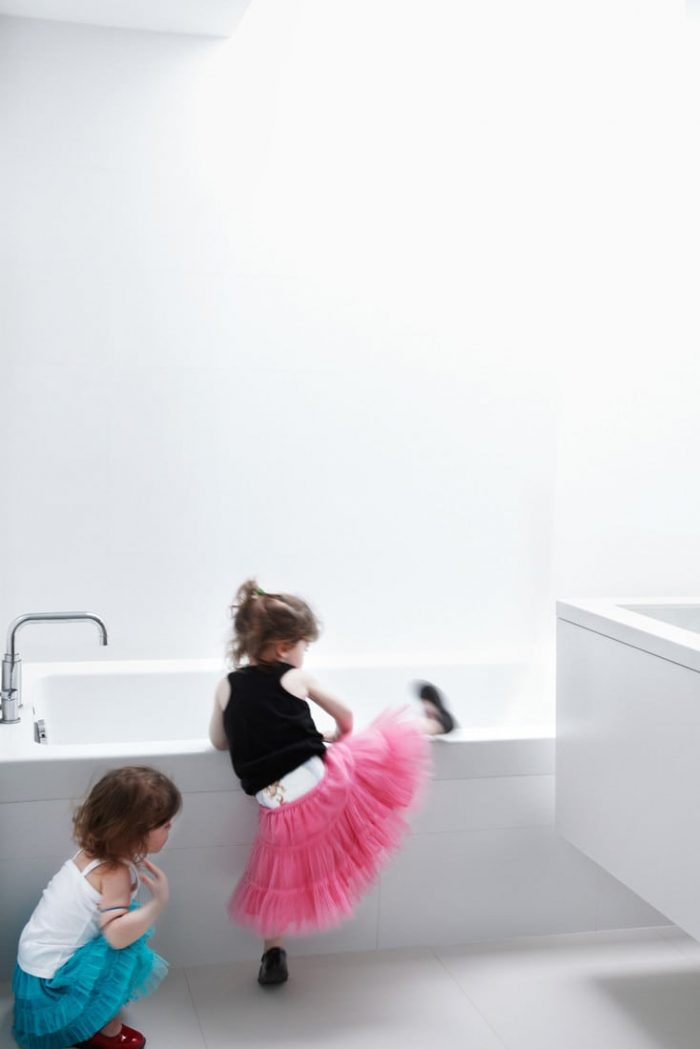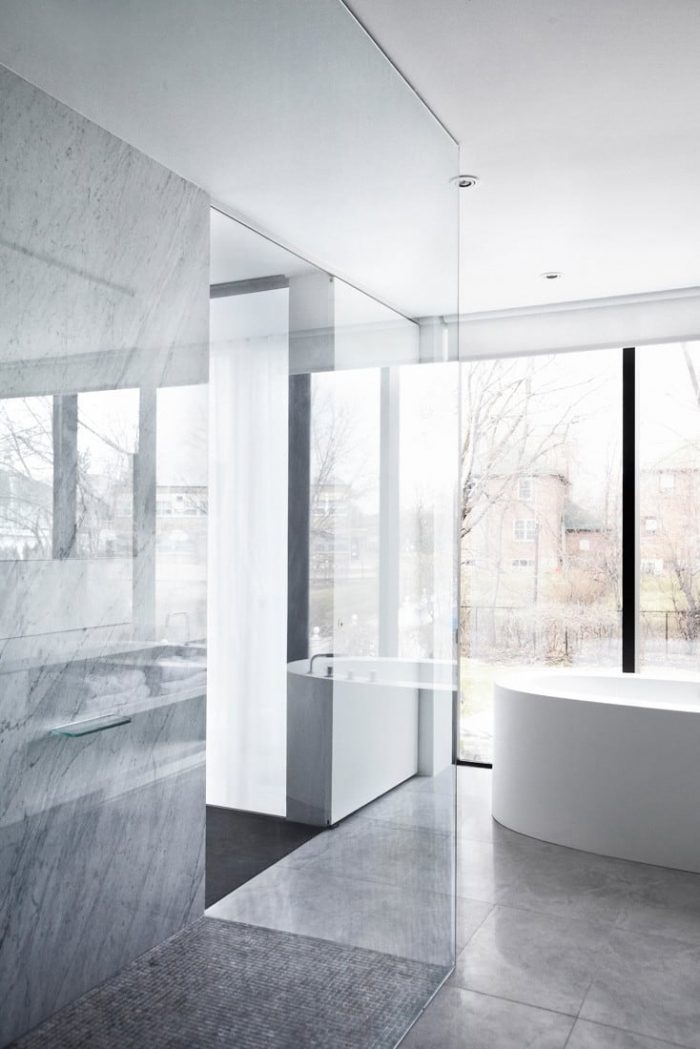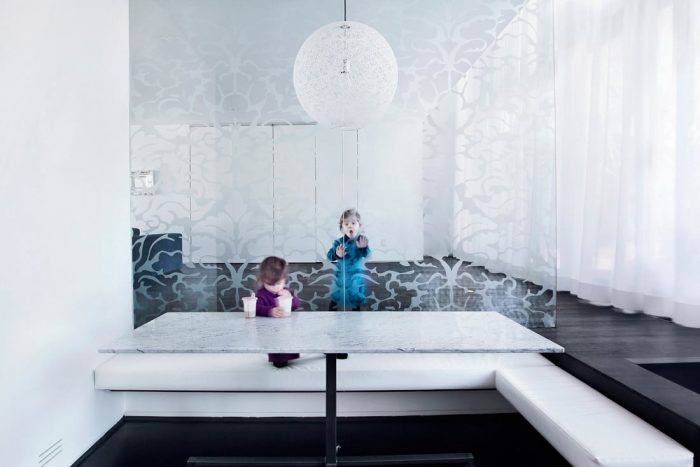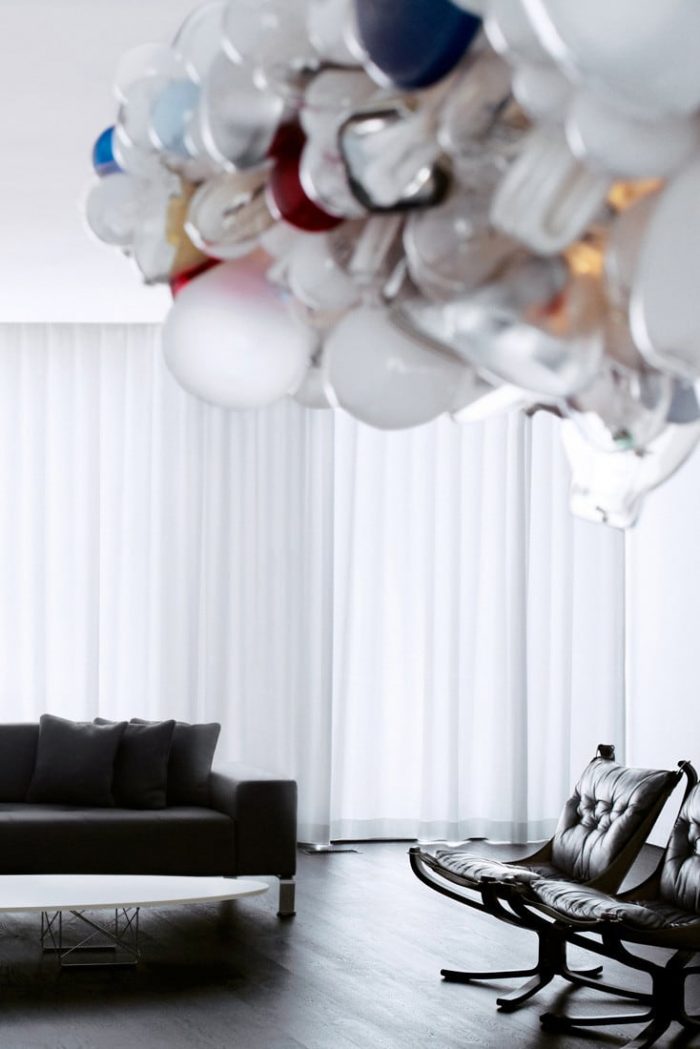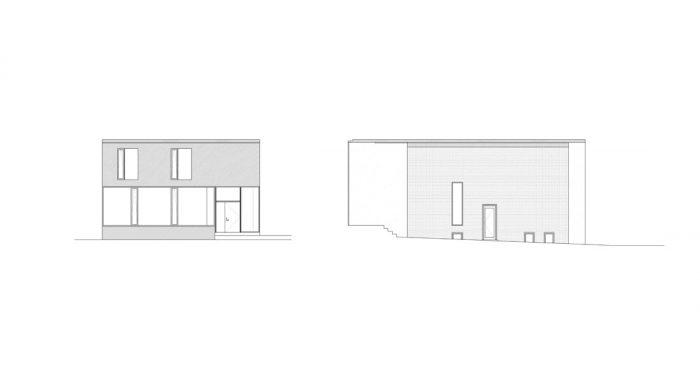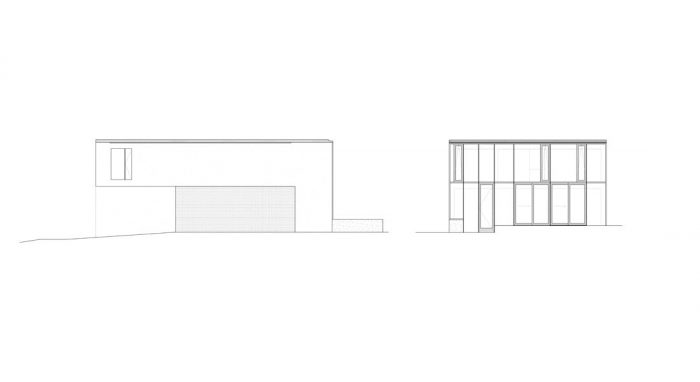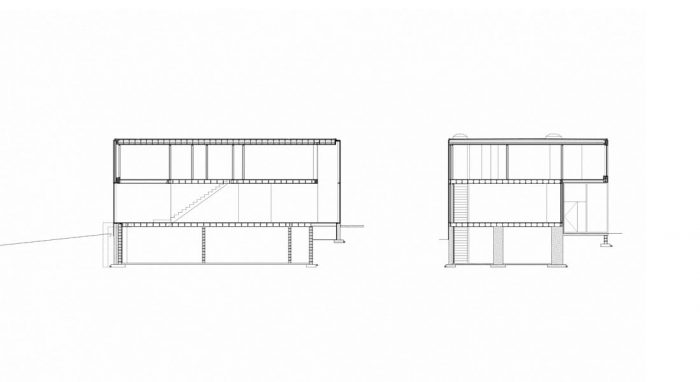60号房是对加拿大多伦多一块大地上的50年代郊区房子的翻新和扩建。
House 60 is a renovation and addition to a 50’s suburban house on a large lot in Toronto, Canada.
现有的房子在很大程度上是内向的–窗户小,天花板低–有一个传统的计划–客厅,独立的餐厅和狭窄的厨房在一楼,二楼有一个迷宫般的卧室。从外观上看,这是一栋没有任何区别的建筑–砖砌的浅斜屋顶,随着时间的推移,又装饰了一个锻铁的前廊和铝制的遮阳板。尽管不尽如人意,但gh3认为现有的房子是一种可以再利用的材料资源,而不是被遗弃,这一立场符合可持续发展的首要原则。
The existing house was largely introverted—small windows, low ceilings—with a traditional plan—living room, separate dining room and cramped kitchen on the ground floor, and a maze of bedrooms on the second. An undistinguished building from the exterior—brick with a shallow sloping roof—adorned over time with a wrought iron front porch and aluminum awnings. However underwhelming, the existing house was considered by gh3 as a material resource to be reused, rather than abandoned, a position consistent with the first principles of sustainability.
房子的前部和后部都进行了增建,形成了两个新的外墙,完成了对房子的重新塑造。房子的大部分都被重新粉饰了。这与大量的室内绝缘材料的安装相结合,大大降低了房屋的能源需求。现有的斜屋顶被拆除,一个新的平屋顶,其隔热性能远远超过法规的要求,完成了新的高绩效的围护结构。
Additions were made to both the front and rear of the house resulting in 2 new facades and accomplishing the re-imaging of the house. Much of the house was re-skinned. This, in combination with the installation of significant interior insulation, greatly reduced the energy requirements of the house. The existing pitched roof was removed and a new flat roof, insulated well beyond code requirements, completed the new high-performing envelope.
房屋后部的2层玻璃墙,前部的1层玻璃墙,以及多个天窗,最大限度地吸收了日光,促进了被动通风。后部大量使用玻璃,使得花园的景观数量最多,而前部则作为现代的前廊,将建筑与它的场地和城市重新联系起来。
A 2–storey glass wall at the rear of the house, a 1–storey glass wall at the front, and multiple skylights maximize the admission of daylight and facilitate passive ventilation. The extensive use of glass at the rear allows for the greatest number of views to the garden and at the front, serves as a modern-day front porch, reconnecting the building with its site and the city.
房子的底层被组织成一个连续的开放空间,以适应不断增长的家庭的使用模式的变化。主要生活空间的两侧是纵向的服务区,包括储藏室、媒体单元、茶水间、楼梯和机械空间,设置在全高的可旋转墙板后面。从地板到天花板的玻璃板被战略性地放置在一楼和二楼,为年幼的孩子提供安全保障,同时允许通过所有的主要生活空间观看。玻璃板和墙面上有选择地镶上了超大规模的羊群图案,这放大了室内的白度。
The ground floor of the house is organized as a continuous open space to allow for the changing patterns of use of a growing family. The principal living space is flanked longitudinally on both sides with service zones containing storage, media units, a pantry, stairs, and mechanical spaces, set behind full-height pivoting wall panels. Floor-to-ceiling glass panels are strategically positioned on the ground and second floors to provide safety for young children while allowing views through all of the principal living spaces. Glass panels and walls are selectively fritted with a super–scaled flock pattern, which amplifies the whiteness of the interior.
Architects: gh3*
Area : 315 m²
Year : 2009
Structural Engineer : Blackwell Bowick
General Contractor : Blue Springs Construction
Architects : gh3* architecture
Design Team : Pat Hanson, Diana Gerrard, Raymond Chow, Liza Stiff, Vivian Chin
Budget : CAD$800,000
City : Toronto
Country : Canada

